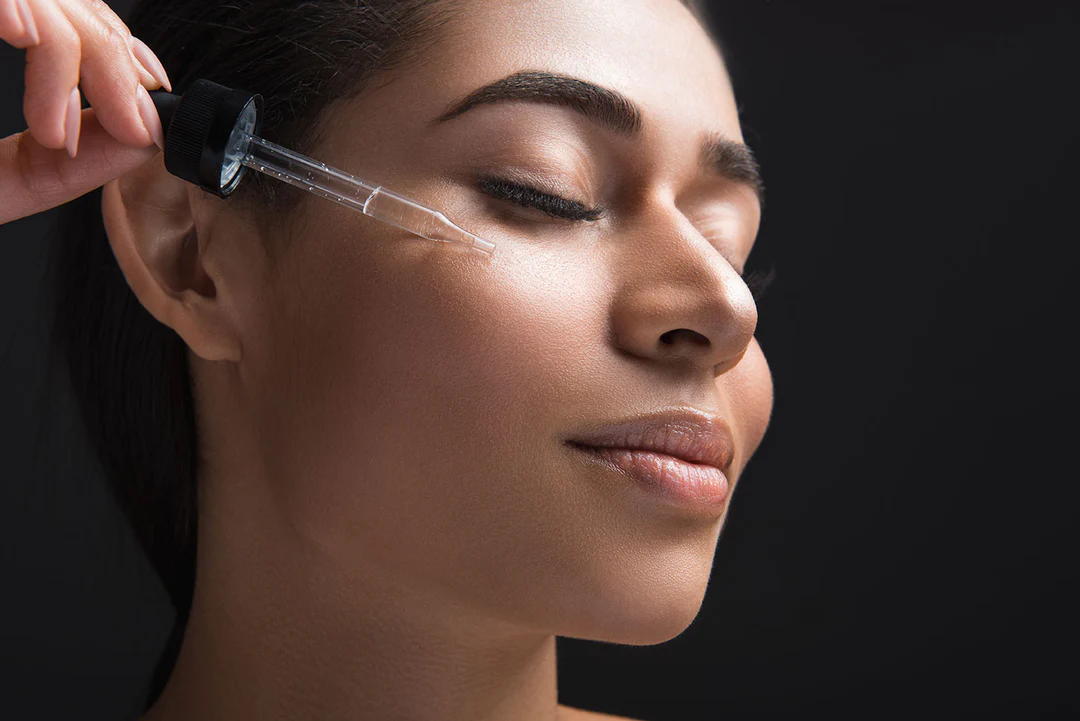
Can I Use Retinol for Rosacea?
Finding the right skincare routine can be difficult at the best of times, let alone if you’re prone to rosacea. Finding ingredients that will keep your complexion looking its best can often feel like an impossible task. With that in mind, I can’t blame you if you find yourself a little confused when you hear about how using retinol can help fight rosacea. Yes, admittedly, it doesn’t make sense to use one of the most effective skincare ingredients topically on skin with rosacea, which is known to leave your skin feeling tight, dry, and uncomfortable.
But don’t worry, we’ll make everything clearer by the end of today’s blog post, so if you’re wondering if you can use retinol for rosacea, stay tuned.
Does Retinol Make Rosacea Worse?
The short answer is: No, it won’t, despite the common perception and misconceptions about how retinol works that might make you think it spells disaster. Many people often think that retinol exfoliates the skin, but it actually speeds up the skin’s cell cycle, removing the buildup of dead skin cells to reveal fresh, radiant skin and leave you with a radiant complexion. This is why using retinol for rosacea can be beneficial for inflamed areas, as they are significantly reduced. However, if your skin is particularly sensitive, it’s best to consult a doctor or dermatologist to ensure you’re using the right concentrate that will benefit your skin and prevent adverse reactions.
Can retinol cream be used to treat rosacea?
Yes, you can, as long as you’ve consulted a dermatologist or medical professional and confirmed that it’s safe to do so. As I mentioned before, you can reduce inflammation or rosacea breakouts by using a topical cream or lotion containing retinol. To combat further potential severe dryness, pair your retinol cream with a serum that’s rich in hyaluronic acid and other moisturizing and skin-repairing ingredients.
The important thing to remember about retinol is that it must be used correctly. To do this, start by using it once a week in your evening routine, then let your skin build tolerance and increase to every other night. If this is new information to you and you find retinol a little confusing, you can read our dedicated blog post on the benefits of retinol for skin care.
Which retinol is best for treating rosacea?
When you first start using retinol to combat rosacea flare-ups, it’s recommended to use an over-the-counter formula. The reason for this is that the amount of retinoids in this product is lower than other more potent medical or prescription formulas.
Try to look for a formula that is lightweight and has the consistency of a serum or oil, especially if there are other moisturizing ingredients in the mix, as this will not only help soothe inflammation on the surface of the skin, but it will also ensure that the skin’s protective barrier is functioning with the right amount of water. This is important because when the skin barrier is weakened, skin damage from free radicals such as pollution, heat, and UV rays can lead to signs of aging, uneven skin tone, and loss of elasticity.
What Should You Not Use on Your Face If You Have Rosacea?
There are a number of ingredients in skincare products that you should avoid if you’re prone to rosacea. Here are some examples of the worst ingredients you shouldn’t use:
Glycolic Acid
Lactic Acid
Alcohol
Perfume
You’ll find these ingredients often in skincare products like toners, astringents, and cleansers. To avoid making the problem worse, it’s best to skip the toner and use a gentle, non-foaming cleanser instead.
How to Calm Down a Rosacea Flare-Up?
If you find yourself suffering from rosacea, here are some of the simplest, most effective steps to combat inflammation and soothe irritated skin.
Switch to a gentle cleanser – Make sure to use warm water and gently massage the cleanser into your skin. Once you’re done, dry your skin with a soft towel and pat it gently.
Moisturize daily – In fact, you should moisturize twice a day to ensure that your skin stays healthy, especially if you choose a formula that’s rich in hyaluronic acid and other moisturizing ingredients.
Avoid harsh products – Even the gentlest facial scrub formulas can be too harsh for the skin. For this reason, you should avoid products like facial scrubs and exfoliating toners.
Use sunscreen daily – It’s extremely important to use an SPF every day, even on cloudy days. This protects the skin from UVB and UVA rays as well as other environmental influences and free radicals.
Test your makeup before applying it to your face. You’ll often find that cosmetic formulas contain a lot of fragrance, which can make rosacea worse. Test a small amount on the inflamed area of your skin before applying foundation or makeup. If there are no signs of worsening rosacea, you can safely put makeup on your face.
How long does retinol ugly last?
Many people use the term “retinol ugly” to describe the side effects that occur when retinol is first applied to the skin. As the skin builds tolerance, you will notice flaking in some areas, slight redness and itching, and your skin feels dry and uncomfortable. You can’t escape the ugly, and it’s seen as something you have to put up with. Some people find that they can last a week, and some find that they can last closer to three weeks. You can use hyaluronic acid to target and soothe any areas and add hydration to your skin.
Here’s some information about using retinol for rosacea. Remember, if you have questions about using certain skin care products, it’s best to consult a doctor or dermatologist. If you have any more questions about skin care, you can follow us on Instagram.


